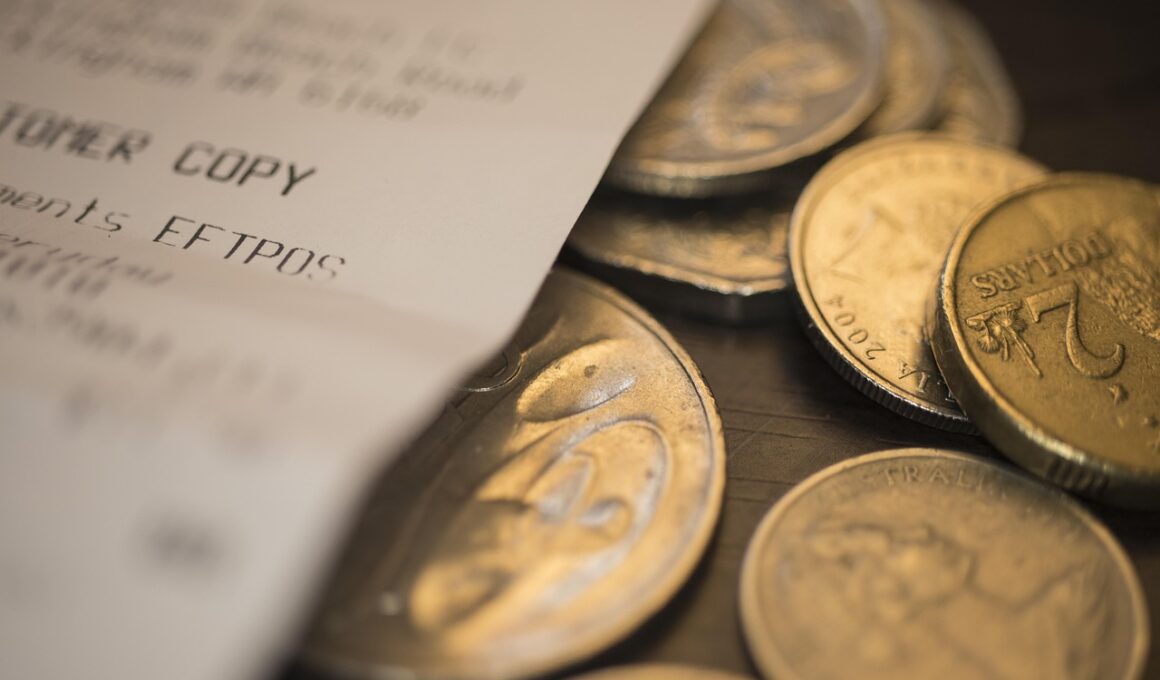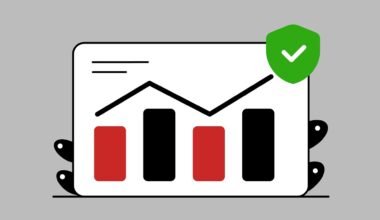Tracking Subscriptions and Recurring Payments Using Budget Apps
In today’s fast-paced world, managing your finances effectively is crucial. One way to achieve this is by using budgeting apps that help track your subscriptions and recurring payments. These apps simplify the process, allowing you to have a clearer overview of your monthly expenses. With automated tracking features, you won’t miss any payment due dates. Additionally, many apps offer notifications and reminders, which can help prevent late fees. By having all your subscriptions listed in one place, you can assess their value and determine if you are truly getting your money’s worth. Budgeting apps often categorize these expenses, making it easier to analyze where your money goes. Some popular apps include Mint, YNAB, and Truebill, which allow for easy management of subscriptions. By consolidating bills and payments into one convenient location, you can create a more comprehensive financial plan. This practice can also assist in setting aside funds for savings or unexpected expenses. Being proactive in managing subscriptions can avoid accumulating unnecessary debt. Investing time in budgeting apps ultimately encourages financial stability and better fiscal habits for your future.
Setting Up Budgeting Apps for Subscription Tracking
To effectively track your subscriptions, begin by choosing a budgeting app that aligns with your needs. Many apps offer user-friendly interfaces, making it simple to input and monitor active subscriptions. After selecting your app, create an account and start listing all the subscriptions you currently have. Include detailed information such as monthly costs, billing cycle, and payment methods. This will give you a clearer picture of your ongoing financial commitments. Next, categorize each subscription based on their nature; for example, divide them into categories like entertainment, utilities, and personal care. Most apps allow color-coded labels, which can help visualize areas where you might want to cut back. Regularly review and update these entries to ensure accuracy. Some apps send alerts when trial periods end or offer usage statistics to determine how much you need them. Additionally, take note of infrequent payments that might crop up unexpectedly. Armed with this knowledge, you can make informed decisions regarding which subscriptions to keep or cancel. This organized approach ensures you remain financially agile while also keeping your budget maintained effectively.
Identifying Unused Subscriptions
Tracking your subscriptions helps you identify those that you may no longer use. Budgeting apps often provide insights into your subscription usage, highlighting those that went unused for extended periods. By being aware of these rarely used services, you can take proactive steps to eliminate unnecessary expenses. Many subscriptions are easy to forget, especially when charges happen automatically. Often, we may keep paying for services that aren’t actively utilized but are a drain on our finances. Spotting these hidden costs becomes more straightforward with a budgeting app’s historical spending reports. Take a moment to analyze which subscriptions you’ve used within the last few months. If there’s an app or service that hasn’t seen any activity, consider canceling it altogether. Not only will this save you money, but it will also streamline your finances. Additionally, remind yourself to reevaluate subscriptions periodically to prevent re-accumulating unused services. You can even set a reminder in your budgeting app that prompts you to review your subscriptions every few months. This way, you can continue maintaining a more efficient financial landscape.
Optimizing Subscription Services with Apps
Once you identify unused subscriptions, it’s essential to optimize the remaining services to ensure you’re getting the best value. Budgeting apps often include features to compare subscription costs and can suggest cheaper alternatives. Take time to research and determine if there are more cost-effective options for the services you utilize frequently. For instance, exploring family plans or annual subscriptions can save you significant amounts compared to monthly fees. Some budgeting apps present promotions and discounts that may be available when renewing subscriptions, providing additional savings. Also, consider bundling services together; for example, phone, internet, and TV providers often offer package deals that can lower overall monthly expenses. By maximizing the opportunities from different providers, you may find a better alignment with your budget. Furthermore, take advantage of trial periods offered by many services. These allow you to evaluate if a subscription truly meets your needs before committing. Regularly reassessing your subscriptions with the help of budgeting apps makes your financial journey more efficient, allowing you to achieve greater control over your finances.
Setting Budgets for Subscriptions
Implementing strict budgeting for subscriptions can significantly improve your financial health. After monitoring your recurring payments, set a predefined budget for how much you are willing to spend monthly or annually on subscriptions. Many budgeting apps enable you to create specific budget categories, where you can input your desired spending limits. This way, you’ll be alerted when you’re approaching or exceeding your budget allocation for subscriptions. Be realistic when setting these limits; assess your financial situation and consider both necessary and discretionary spending. Factor in any potential increase in prices for existing subscriptions to avoid surprises. It’s important to balance maintaining essential services and enjoying entertainment or leisure options; thus, your budget should reflect these aspects. Furthermore, having a separate category for occasional subscriptions allows flexibility for special purchases without straining your main budget. Establish accountability by regularly reviewing your progress in the app. Tracking your expenses not only keeps you in check but also provides insight into your spending habits over time. This conscious approach strengthens your overall budgeting strategies and fosters responsible spending for future financial growth.
Using Alerts and Notifications in Budgeting Apps
Utilizing alerts and notifications offered by budgeting apps introduces another layer of financial awareness. Automated reminders help you to stay informed about upcoming subscription renewals or due dates, providing ample time for necessary actions. Many apps allow users to customize alert settings, tailoring notifications based on personal preferences. For instance, you can choose to receive alerts one week before a payment is due, ensuring that you have time to account for payments. Being proactive in managing these reminders minimizes the likelihood of incurring late fees. Moreover, certain apps allow subscription cancellation reminders, so you can avoid being charged for services that you no longer use. Engaging with notifications instills a proactive mindset regarding your finances. Update your subscription settings to accommodate changes in your situation. Whether you experience unexpected expenses or income changes, modifying your alert settings can provide higher financial flexibility. Regularly engaging with these budgeting app features keeps your financial objectives prioritized. This awareness fosters good spending habits, promoting long-term fiscal responsibility and improving your overall money management skills.
Conclusion: Taking Control of Your Finances
In conclusion, utilizing budgeting apps for tracking subscriptions and recurring payments significantly enhances your financial management. Not only can you easily monitor your subscriptions, but these apps also provide insightful analytics that aid in identifying cost-cutting opportunities and optimizing ongoing expenses. After setting budgets for subscription services, it’s crucial to remain vigilant about spending habits and ensure that you adhere to these limits. Taking advantage of alerts allows consistent financial awareness, reducing the chances of unwanted surprises down the road. Embrace the power of technology in managing your finances effectively, as it empowers you with valuable insights and meaningful control over your monetary landscape. With budgeting apps, you can attain a clearer picture of your financial commitments and make informed decisions that align with your long-term goals. The more engaged you are with your budgeting strategies, the better you will become at managing your finances. By continually monitoring and re-evaluating your subscriptions and their worth, you cultivate good saving habits. Achieving financial stability is a journey, so leverage these tools to keep you on track while enjoying financial peace of mind in the process.
Using Budgeting Apps to Improve Financial Health
Adopting a proactive approach toward managing your financial health is always advisable, and budgeting apps provide essential resources for doing so. Integrating these apps into your daily routine will inherently encourage better financial behaviors. Whether monitoring expenses or setting up alerts, they can help you stay accountable and informed. For a healthy financial life, consistently tracking subscriptions and recognizing patterns in your spending is crucial. Furthermore, budgeting apps foster discipline, allowing you to close gaps in your spending habits improving overall financial well-being. Incorporating their features into your life enables opportunities for savings and reduces financial stress over time. Additionally, staying organized with subscriptions allows you to make sound decisions about renewing, canceling, or switching providers when necessary. Taking the time to evaluate and manage your subscriptions ultimately grants you more control over your discretionary spending. Moreover, this practice empowers you to redirect any savings into investments or emergency funds, further solidifying your financial foundation. Engaging regularly with budgeting apps facilitates long-term financial sustainability, enabling you to thrive in achieving financial goals while cultivating respect for your monetary resources.


